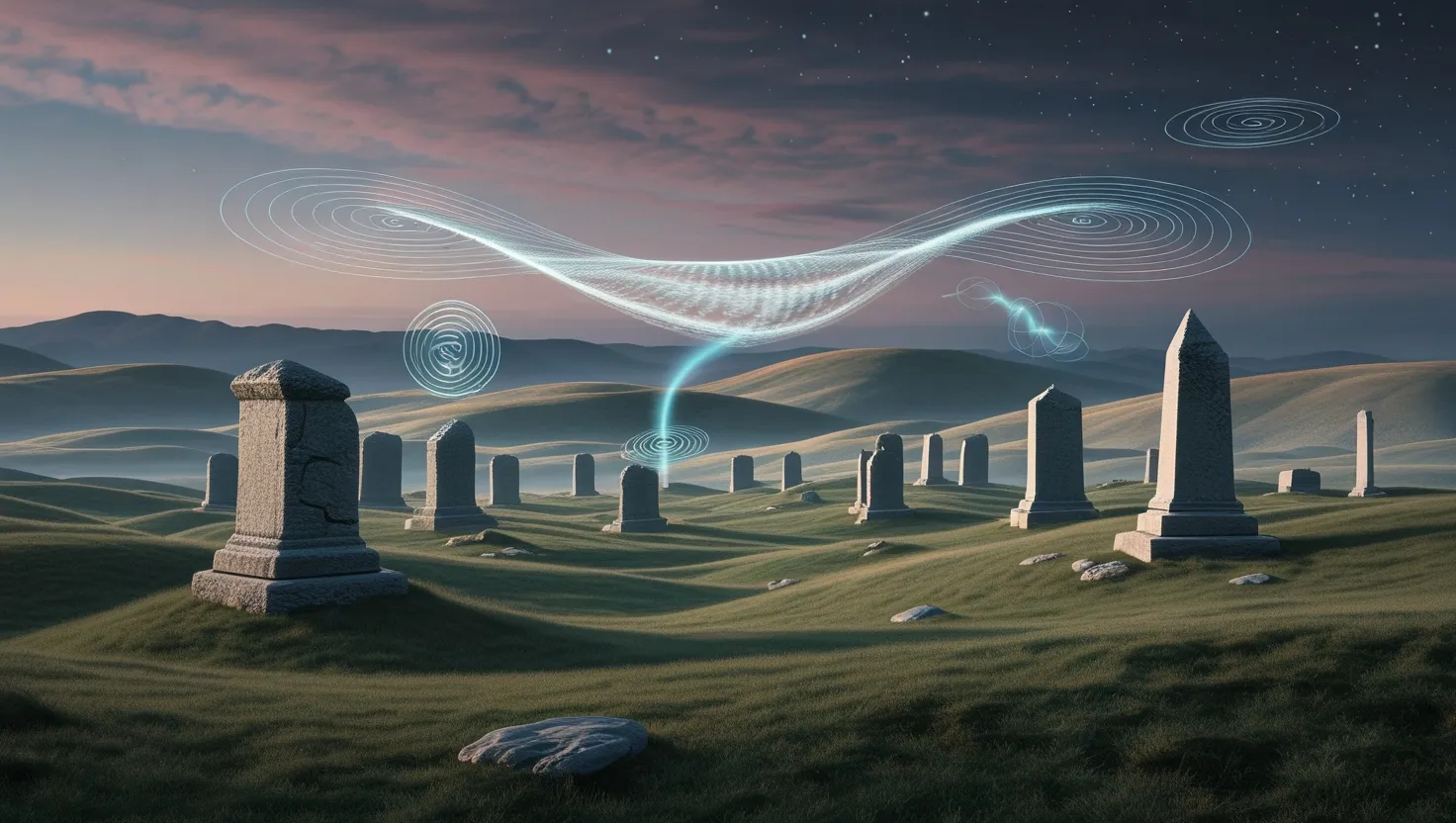Electromagnetic anomalies have long fascinated scientists and the public alike, challenging our understanding of the natural world. These peculiar phenomena, scattered across the globe, defy easy explanation and push the boundaries of conventional physics. I’ve delved into some of the most intriguing cases, uncovering a tapestry of mystery that spans continents and cultures.
In the valleys of Norway, the Hessdalen Lights have puzzled observers for decades. These luminous orbs dance through the sky, emitting electromagnetic frequencies that interfere with nearby electronics. Researchers have recorded these lights on numerous occasions, yet their origin remains elusive. Some theorize they’re plasma formations, while others suggest more exotic explanations. Whatever their source, the Hessdalen Lights continue to baffle experts and draw curious onlookers from around the world.
“The most beautiful thing we can experience is the mysterious. It is the source of all true art and science.” - Albert Einstein
This quote resonates deeply when considering the Marfa Lights of Texas. These ghostly orbs have been reported since the 19th century, moving against wind patterns and defying natural explanations. What’s particularly intriguing is the measurable electromagnetic fields they produce. How do these fields relate to the lights’ movement and appearance? It’s a question that continues to perplex investigators.
Have you ever experienced your compass going haywire? At the Oregon Vortex, this is a common occurrence. This site, nestled in the forests of the Pacific Northwest, is known for its bizarre electromagnetic properties. Compasses spin unpredictably within a defined boundary, and other electromagnetic instruments malfunction. It’s as if the laws of physics take a vacation in this small patch of woodland. What could cause such localized disturbances in the Earth’s magnetic field?
Venturing into the frigid expanses of the Arctic, we encounter the Lake Anjikuni Anomaly. This remote location is known for its regular electromagnetic pulses and the failure of radio equipment. The mathematical regularity of these pulses is particularly striking. Could they be a natural phenomenon, or might they hint at something more extraordinary? The harsh Arctic environment adds an extra layer of mystery to this enigmatic site.
In the red rocks of Arizona, the Sedona Energy Vortices have long attracted spiritual seekers and scientists alike. These areas exhibit measurable variations in electromagnetic fields that correlate with reports of heightened sensory experiences. It’s a rare convergence of the scientific and the spiritual. How do these electromagnetic variations affect human perception? The question opens up fascinating avenues for research into the interaction between electromagnetic fields and consciousness.
“There are more things in heaven and earth, Horatio, than are dreamt of in your philosophy.” - William Shakespeare, Hamlet
Shakespeare’s words seem particularly apt when considering the Brown Mountain Lights of North Carolina. These ancient light phenomena have been reported for centuries, predating modern technology. Yet, when they appear, they produce distinct electromagnetic signatures. What could be the source of these enduring lights? Native American legends speak of spirit lights, while scientists search for geological explanations. The truth may lie somewhere in between.
Finally, we come to the Molebka Triangle in Russia. This zone is known for its regular electromagnetic pulses from unknown sources. Scientific instruments detect these pulses, but their origin remains a mystery. Could they be related to geological processes, or might they hint at something more exotic? The Molebka Triangle reminds us that even in our technologically advanced age, the Earth still holds secrets.
These seven electromagnetic anomalies challenge our understanding of the world around us. They remind us that science is an ongoing process, constantly evolving as we encounter new phenomena. Each of these sites offers a unique window into the complexities of electromagnetic fields and their interaction with our environment.
What draws us to these mysteries? Is it simply curiosity, or does it speak to a deeper human need to explore the unknown? Perhaps it’s a combination of both. These anomalies spark our imagination and drive scientific inquiry forward.
As we continue to study these phenomena, new questions arise. How do these localized electromagnetic anomalies relate to the Earth’s broader magnetic field? Could they offer insights into geomagnetic processes we don’t yet fully understand? And what might they tell us about the potential for undiscovered forms of energy?
The persistence of these mysteries in our modern age is both humbling and exciting. They remind us that the world is still full of wonders waiting to be discovered. As technology advances, we may gain new tools to probe these enigmas, potentially revealing explanations that bridge the gap between the known and the unknown.
“The important thing is not to stop questioning. Curiosity has its own reason for existing.” - Albert Einstein
Einstein’s words encapsulate the spirit of scientific inquiry that drives the investigation of these anomalies. It’s this curiosity that pushes us to look beyond the obvious, to seek explanations for the inexplicable.
These electromagnetic mysteries also raise questions about our place in the universe. If such strange phenomena can occur on our own planet, what might exist beyond Earth? Could similar anomalies on other worlds provide clues about alien environments or even life?
As we ponder these questions, it’s worth considering the impact of these anomalies on local communities. Many have become tourist attractions, drawing visitors from around the world. This influx of curious observers can bring economic benefits but also raises concerns about preserving these sites. How do we balance scientific study and public interest with the need to protect these unique locations?
The study of these electromagnetic anomalies also intersects with other fields of research. Geologists examine the underlying rock formations, atmospheric scientists study local weather patterns, and physicists develop new theories to explain the observed phenomena. This interdisciplinary approach highlights the complexity of these mysteries and the need for collaborative research.
In conclusion, these seven unexplained electromagnetic anomalies remind us of the wonders that still exist in our world. They challenge our understanding of physics, push the boundaries of scientific inquiry, and ignite our imagination. As we continue to study and explore these phenomena, who knows what new discoveries await?
The next time you hear about an unexplained light in the sky or a compass spinning wildly, remember that you might be witnessing one of the world’s enduring mysteries. And perhaps, just perhaps, you’ll be inspired to join the ranks of those seeking to unravel these electromagnetic enigmas.
What electromagnetic mysteries might be waiting to be discovered in your part of the world? The next great scientific breakthrough could be just around the corner, hidden in plain sight. Keep your eyes open, your mind curious, and who knows what you might find?






